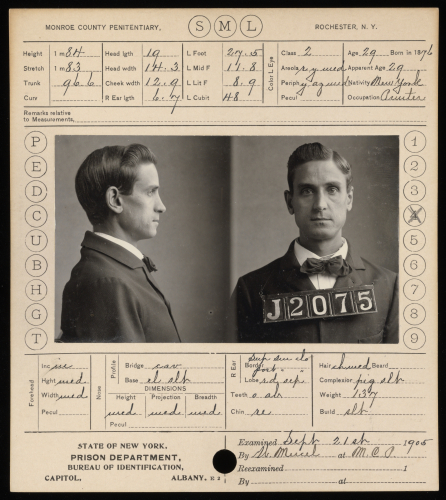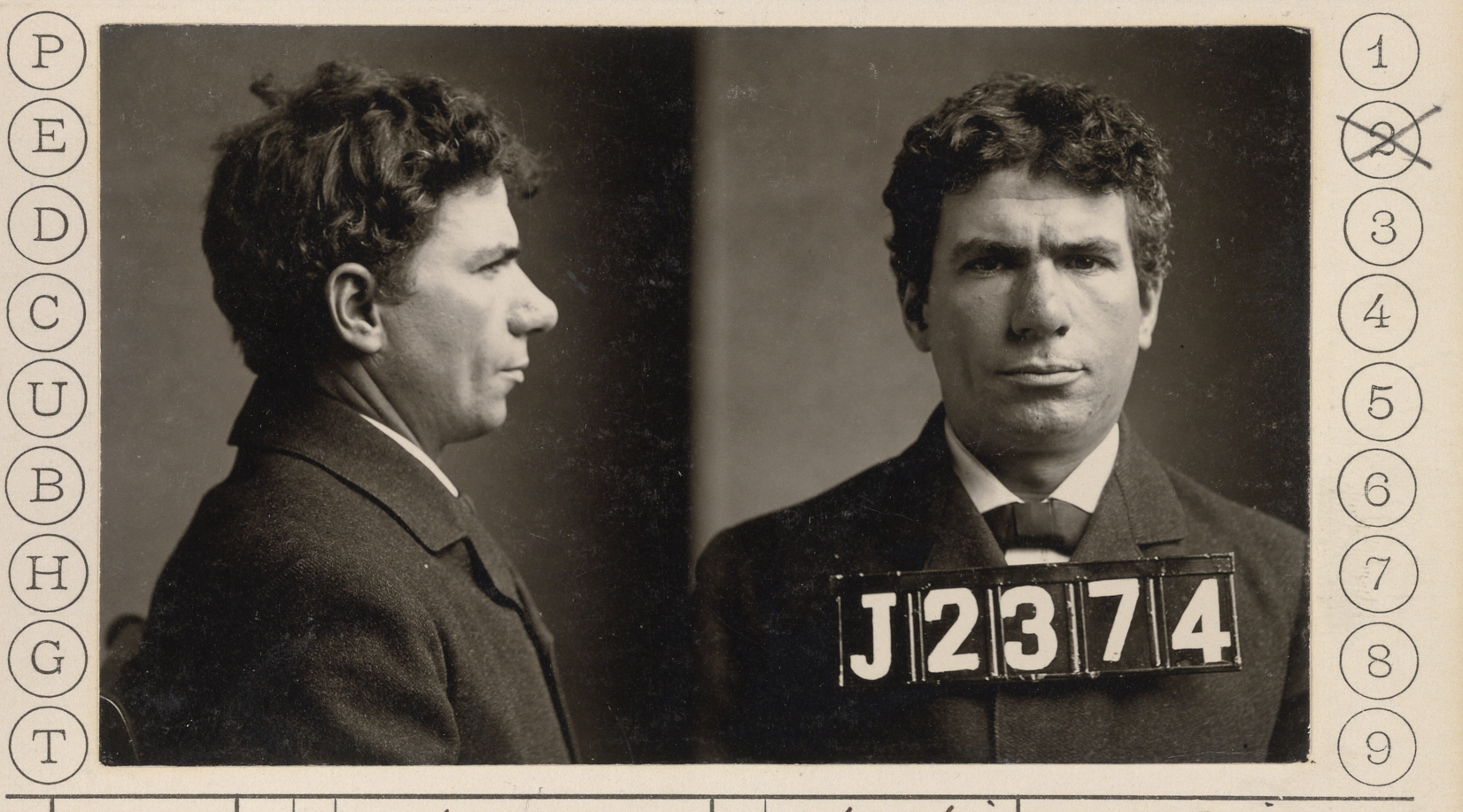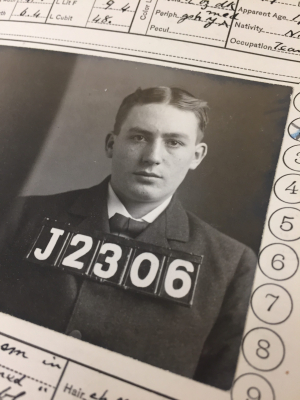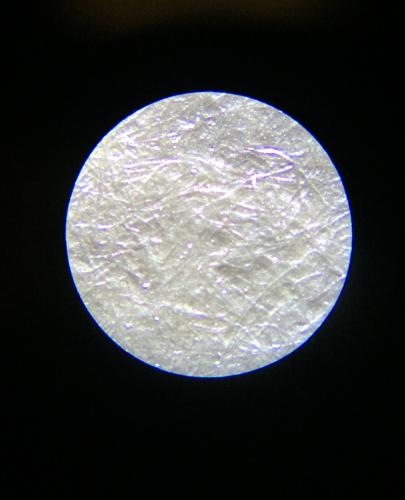
One of the most interesting parts of working in digitization at a large institution is the opportunity to interact with a wide variety of materials from different eras. My day to day work typically sees me digitizing a fair amount of manuscripts and correspondence with some photographs and 3D objects interspersed. Recently, a collection of inmate identification cards dating from 1906 from the Monroe County Penitentiary Papers, held in Rare Books, Special Collections and Preservation, were digitized as part of an upcoming grant funded project centered around Rochester as a prison town. The collection is comprised of 321 cards that have physical information about the offender as well as crimes committed. Each card has a photograph affixed showing the offender from the side and head on.
I was immediately intrigued by the photographs as they were in excellent condition, despite the cards themselves being warped, suggesting exposure to high humidity at some point. A large portion of my formal education focused on historic process photography, both as a maker and historian, and photographic preservation. These studies involved the proper identification of photographic processes and materials; I couldn’t resist putting that training towards identifying the photos on the cards.
Given their creation date of 1906, they were likely one of two prominent photographic processes: gelatin silver or matte collodion. A cursory look at the images reveals some clues to what process was used to make them, the first being that each photo transferred a mirror image of itself to the back of the card in front of it. This transfer, or offsetting, phenomenon happens to images that have platinum in them when they are exposed to high humidity and air pollutants. There are generally two ways that platinum ends up in photographs: it is present as part of the photosensitive substance that undergoes a chemical reaction to produce a photographic image in the form of a platinum print, or it is used as a toner applied to the surface of a silver based print. Platinum prints are known as dead matte, that is to say they exhibit no surface reflection. The mugshot photographs have a slight sheen to the surface, so they are more likely toned prints rather than platinum prints.



The images themselves do not seem to have faded, and exhibit a cool, neutral tone. There is no yellowing of the whites, and the blacks are clear without evidence of silver-mirroring, a type of chemical breakdown wherein the blacks in a photo look like reflective silver. The images did not crack, bend, or warp in response to the humidity that warped the boards to which they're affixed. All of these things, along with the creation date of 1906, point to the likelihood of them being matte collodion images toned with platinum.

The final detail that suggests that these images are matte collodion can be seen when the surface of the photograph is magnified. The fibers of the paper are visible, but are lightly covered in something that looks like frosting. This is a baryta layer, which is a layer of clay and gelatin spread across the surface of the paper support. The photo reactive chemistry is then applied to the baryta layer. This layer does not expand and contract when exposed to humidity, which is why the cardstock warped and the photos did not. A baryta layer would have been found in both gelatin silver or matte collodion photograph processes, but on a gelatin silver print, the paper fibers would have been completely obscured. In matte collodion images, the baryta layer is very thin, allowing the fibers underneath to be seen, such as in the case of the images on the mugshots.
I look forward to following up this initial hypothesis with further research on the collection. Hopefully, I can discover the identity of the photographer and learn more about their working process.


